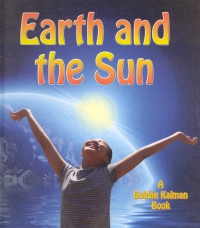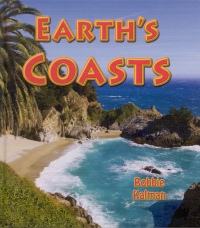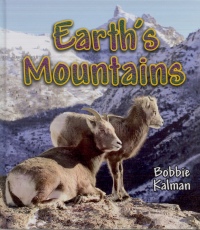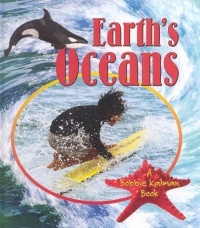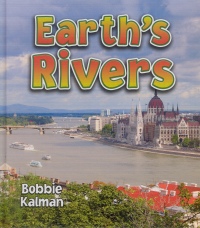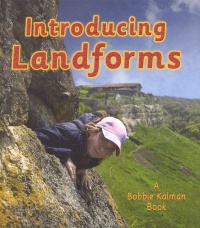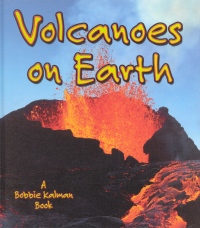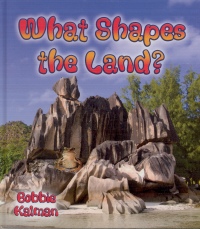| ________________
CM . . . . Volume XVII Number 29 . . . . April 1, 2011
excerpt:
Although this is an older series (2008 & 2009), the content has aged well. For example, in Earth and the Sun, the picture of the solar system includes a text box that explains changed status of Pluto.
You can still put this series on your shelves and trust that students are getting accurate information. The main strength of this series and the main weakness are two sides of the same quality. Like other Crabtree series, "Looking at Earth" is an accessible source of information. You can count on facts that are stated in manageable and organized sections. The pictures and illustrations are relevant and attractive. You can count on these books being useful to beginning researchers. Each book includes a table of contents, a simple glossary and an index. The books also include questions to engage the reader in further investigation of the topics. The main weakness is that, although these books are solid resources, there is nothing outstanding about them. The photos appear to be public domain images. They are nicely framed and nicely laid out on the pages, but some images are used in more than one book. This isn't a reason to not buy the series, and it probably helps to keep the costs down, but it doesn't make it rise above the rest when you are looking for ways to make your budget dollars go as far as possible. Another weakness is the use of the American spelling for words like colour and harbour. Earth and the Sun is quite an eclectic collection of information related to the role of the sun in relation to life on Earth. Topics include the solar system, seasons, day and night, photosynthesis, shadows, reflections, the colors (not colours) of sunlight, the water cycle, and food chains. There is even a section called "Go to sleep or fly away?" that explains how different animals deal with reduced sunlight and temperatures. Something for everyone, if you know to look here for it. Earth's Coasts may be useful for the examples of different landforms that are pictured and labelled. If you want a picture and definition of a lagoon, fjord, or bay, for example, you might want to purchase this book. Earth's Mountains explains the formation of different types of mountains, including fold, block, dome and volcanic. It also looks at the people, plants and animals that live in mountainous areas. Curiously, the photo accompanying the information about the flowers that grow in the meadows at the bottom of mountains shows tulips being cultivated in a field with Mount Fuji in the distance - not what I usually think of when I think of mountain meadow flowers. Perhaps this is an example of where a stock photo was not wisely chosen. Earth's Oceans would definitely earn a place on my library shelves, but I'm biased. I can't resist a picture of sleeping sea otters with kelp wrapped around them to keep them from floating away. The information identifies the warm and cold oceans, ocean habitats, ocean food chains, coral reefs, the water cycle, and tides. One very effective double spread uses white text on black pages with photos of two animals that live in the deep part of the oceans where sunlight doesn't reach. The text accompanying the photo of the comb jelly explains that:
Earth's Rivers explains how rivers shape the land through erosion and how they build up the land through deposits of soil and sand at the river mouths. Clearly labelled photos identify the parts of a river system, such as estuary, delta, and channel. The plants, animals and people that inhabit river habitats are identified. The benefits and dangers of too much and too little water are discussed. One picture that may be confusing to young readers is the picture of the planet Earth from space apparently beginning to sink into a large body of water. The picture accompanies an explanation of global warming but only confuses the concept. Again, an example of a stock photo that was poorly chosen for this age level. Introducing Landforms makes good use of labels to identify many different landforms, for example, waterfall, glacier, peninsula, cliff, and cove. At the end of the book is a "Landforms quiz" that asks the reader to "see how much you have learned about landforms" by matching the correct picture with the clues. The examples are clear and are a good review of the information in the book. Volcanoes on Earth is full of clear information about different types of volcanoes. It explains the difference between active, dormant and extinct volcanoes. An interesting explanation of volcanology is included as well as a look at the way volcanoes help us by providing clean heat and fertile soil. What Shapes the Land? incorporates a lot of the information from the other volumes in this series to explain how the land is built up and worn down by wind, water and volcanoes. Erosion and weathering are discussed in detail. Volcanoes, rivers, coasts, and glaciers are all part of this final volume in the series. A nice feature of this book is the What shapes the land? organizer on pages 8 and 9. Photos of a volcano, glacier, crashing waves, a river valley, and a desert are accompanied with page numbers which lead you to further information about each feature. Students who are uncertain what they are looking for, or where to find it, may find this visual table of contents helpful. One final curious choice of a photo is on the cover of What Shapes the Land? Someone has superimposed a Godzilla-sized frog sitting on the rock formation staring back at the reader. If you buy this series, don't be surprised when eventually someone asks you for the book about rocks, the one with the frog on the cover. This series provides solid but not outstanding research material. It is suitable for beginning researchers. With only a couple of exceptions, the information is well organized and easily accessible. Recommended. Suzanne Pierson is a retired teacher-librarian, currently instructing Librarianship courses at Queen's University in Kingston, ON.
To comment
on this title or this review, send mail to cm@umanitoba.ca.
Copyright © the Manitoba Library Association. Reproduction for personal
use is permitted only if this copyright notice is maintained. Any
other reproduction is prohibited without permission.
NEXT REVIEW |
TABLE OF CONTENTS FOR THIS ISSUE
- April 1, 2011.
AUTHORS |
TITLES |
MEDIA REVIEWS |
PROFILES |
BACK ISSUES |
SEARCH |
CMARCHIVE |
HOME |
